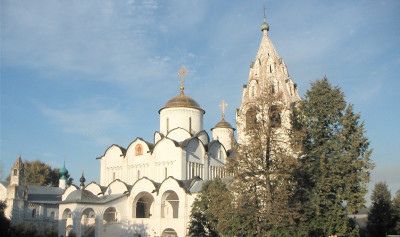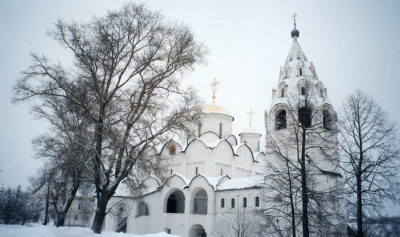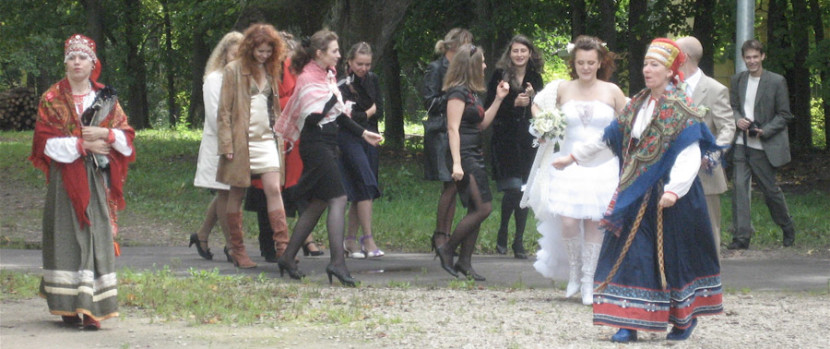The Melbourne launch of “The Lure of Russia” was held at Readings bookstore Carlton on March 3rd 2011. The speech below, given by Professor David Goldsworthy, gives a comprehensive analysis of the book.
The Lure of Russia
I’m not any sort of expert on Russia. However I have been on one of Gail’s unforgettable Russian Arts tours, and I have just had the pleasure of reading her book, The Lure of Russia, so I have those things as foundations. What I’ll try to do is bring out some of the themes of Gail’s book and cherry-pick some of the best bits. My only problem is that there are so many best bits.
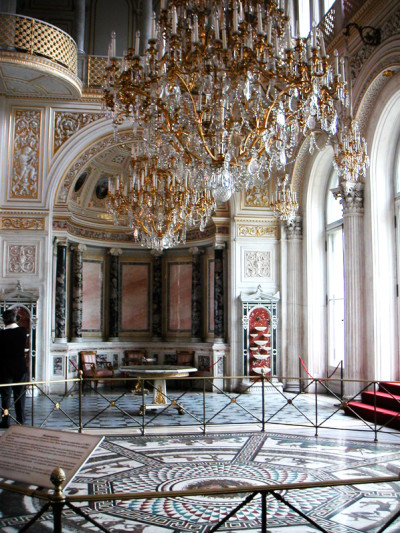 I think the first thing most of us would notice about the book is what a handsome volume it is. Clearly a lot of care has gone into producing it. It’s all the more pleasing to see such a fine piece of book production in this era when the traditional book is supposedly under threat. Also Gail’s photographs are splendid, and splendidly reproduced.
I think the first thing most of us would notice about the book is what a handsome volume it is. Clearly a lot of care has gone into producing it. It’s all the more pleasing to see such a fine piece of book production in this era when the traditional book is supposedly under threat. Also Gail’s photographs are splendid, and splendidly reproduced.
It seems to me that Gail set out to do three main things in her book. She wanted to explain the ‘lure of Russia’ in a way that would fascinate and captivate her readers as Russia has done her. She wanted to give an account of the tumultuous events that took place in Russia over the twenty years 1989-2008, events for which she had a ringside seat since as it turned out, those were precisely the years spanned by her tours. And she wanted to say something about her own travelling in Russia.
In all these respects Gail has very clearly achieved what she set out to do. One reason for that is that she is a gifted teacher. She knows her stuff, as you’ll find on every page of her book. She loves to share her knowledge with her readers. Above all there is her enthusiasm, indeed her passion, for her subject. All these are the marks of a fine teacher. And I would add that she writes entertainingly, with a sharp eye for detail. Here for example is Gail on Russia’s totemic birch trees: the sunlight struck ‘the gleaming white trunks with their curious black scrawny markings – as if they were slender white canvases waiting for nature’s scribblings’. Or here is Gail remarking succinctly on the Peterhoff Palace outside St Petersburg: ‘this baroque Russian confection’.
So what is it that has so lured Gail? It’s surely no secret that for Gail, the lure lies first and foremost in Russia’s magnificent cultural heritage, and especially in the arts – the music, the literature, the paintings, the architecture – as manifested in the great concert halls, museums, galleries, palaces, onion-domed churches, monasteries, convents, kremlins, the cityscapes of Moscow and St Petersburg, the townscapes of the Golden Ring, all against the backdrop of the great landscapes.
Gail’s Russia is to be found in the sound of the a capella choir in the Peter and Paul fortress, with the altino blending perfectly with the basso profondo and all notes in between. Gail’s Russia can be found in the mediaeval masterpieces of icon painting, and in the 19th century social realism of Repin, her favourite Russian artist. It can be found in the fabulous collection of objets d’art in the Russian Museum, ranging from fabergé eggs to Tsar Ivan the Terrible’s throne to the grandest of state coaches. It can be found in such architectural wonders as the cathedrals of the Moscow Kremlin and the red-stoned Beautiful Square – places that proclaim Moscow as the heartland Russian city (by contrast with ‘European’ St Petersburg). (I use the name Beautiful Square rather than Red Square because the Old Russian word could be translated either way.) I say these things are no secret, but what is also no secret is that for Gail the most consuming interest of all is the music. As she says in the book, ‘it is music, this heavenly art, that draws me back to Russia year after year’.
But the arts are founded of course in a society. Gail is a great admirer of the Russian people and that too comes through strongly in her text. From time to time she comments on salient aspects of Russian character. I’ll pick up here on just two of the characteristics that she writes about. The first is fortitude. Here are a people who through more than a thousand years of history have endured long periods of tyrannical and corrupt rule, who have suffered great material hardships, who have fought long and bitter wars culminating in the Great Patriotic War of 1941-5. Into the bargain they have endured a grueling climate. Gail comments aptly: ‘Russia’s history is set against unrelenting winters that in themselves often impacted on that history’s outcomes.’
A second characteristic, one that for many Russians perhaps helps to offset their historic deprivations, is spiritual strength. It’s been said often enough that if we are to understand Russia we should be aware of the idea of Russian soul, even if we find the concept itself hard to grasp. An obvious place to look for manifestations of soul would be religion, especially the Russian Orthodox religion with its historic institutions, its practices, and not least its jam-packed congregations. But as is often argued, religious observance is only part of the story. There seems to be a general view that Russian soul permeates the society at large and is not limited to its ecclesiastical aspects. Indeed, it is quite compatible with the secular aspects. Gail makes the key point, I think, in this passage: ‘Ask most Russians what being “Russian” means to them and they will say that it is not necessarily a sense of nationalism, but that it relates to their traditions, history, culture and for some, religion. These seem to be the foundation of that elusive “soul” that binds people to their homeland and causes many to grieve so much if they have to leave it.’ Interestingly, Gail told me a couple of days ago that one Russian who did leave is an 80-year-old lady who has lived in Australia since 1948, and who phoned Gail out of the blue to say that the book had ‘touched her deepest soul’. As Gail comments: very Russian!
Let’s turn to another of Gail’s objectives, namely, to provide an account of the upheavals to which she was a witness over Russia’s last two decades. Gail reminds us of just how large these changes were. In the late 1980s there was Gorbachev’s perestroika and glasnost. Gorbachev was not popular at home, being attacked from one flank for not liberalising fast enough and from the other for upsetting the old certainties. Then in 1989-91 there came the collapse of the Soviet Union and its attendant state ideology. [Public relics of the old USSR and its ideology are now quite hard to find, though by no means impossible. For example, provincial town squares still sometimes sport a statue of Lenin, typically in pointing mode. The characteristic Russian comment on such statues is: there he goes, still pointing us in the wrong direction. Or a variant: there he goes, directing us to the gaol.] There followed the Yeltsin era of the 1990s, marked by liberal reformism and the transfer of state assets to the tender mercies of the oligarchs, accompanied by economic and governmental chaos (Yeltsin’s functionaries grew quite tired of having to explain that the President was at his dacha ‘busy with documents’; well, maybe). And then came the very much firmer tone (you might say) of the Putin years.
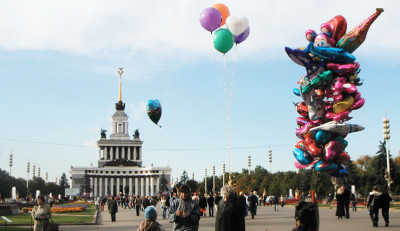 Gail being Gail, she is much concerned with the impact of these events on the Russian people. In a long chapter she lets several of her Russian friends describe in their own words how their lives have been affected. I have time only to urge you to read their stories closely. [Putting their stories together we can trace the larger story: in socio-economic terms the emergence of a class system based on money, a society coming to terms with a good deal of westernisation and perhaps above all western-style consumerism; in socio-political terms, problems arising from the interplay of greater civil rights with a continuing authoritarian tradition in government. In all these changes there have been winners and losers. Generally the winners have been younger educated urbanites; the losers have been older people, rural people, and people cast adrift by the passing of the old Soviet certainties. So it goes.]
Gail being Gail, she is much concerned with the impact of these events on the Russian people. In a long chapter she lets several of her Russian friends describe in their own words how their lives have been affected. I have time only to urge you to read their stories closely. [Putting their stories together we can trace the larger story: in socio-economic terms the emergence of a class system based on money, a society coming to terms with a good deal of westernisation and perhaps above all western-style consumerism; in socio-political terms, problems arising from the interplay of greater civil rights with a continuing authoritarian tradition in government. In all these changes there have been winners and losers. Generally the winners have been younger educated urbanites; the losers have been older people, rural people, and people cast adrift by the passing of the old Soviet certainties. So it goes.]
Gail also wanted to write about the specifics of her tours and her various adventures on the road, in particular in the early years when she was running the tours in and learning the Russian ropes. There was many a mishap, many an encounter with obdurate bureaucracy, which no doubt didn’t seem very funny at the time. I leave you to find these passages too in the book! But to give you the flavour, let me cherry-pick one of the best of the anecdotes which clearly shows that if the Russians have fortitude, so too has Gail.
The scene is the first tour, in 1989. The intrepid party comprises Gail, some teacher colleagues, a group of Canberra schoolgirls aged 17-18, and their interpreter-guide Igor, a pessimistic individual whose favourite utterance is ‘we have a little problem’. They have crossed Siberia from China by rail, and are continuing their journey by bus. The bus pulls up at their prebooked accommodation for the night. It soon becomes apparent that the accommodation is to say the least extremely unsuitable (I don’t think I need to spell out why). Gail tells Igor to find the bus driver and tell him to take them to some other accommodation. Igor pads off and comes back, and this conversation ensues:
Igor: We have a little problem.
Gail: What now?
Igor: The driver, he has been drinking of the vodka.
Gail: How much of the vodka?
Igor indicates with his hands a ‘pretty decent slug’.
Gail: Do you think it is safe for him to drive the bus?
Igor: No. But it is not safe to stay here either. The decision must be yours.
Well, Gail chose to hit the road. Apparently the driver was well up to the task, and the busload lived to tell the tale.
Now here’s my coda. Another purpose of the tours was to enlighten at least some Russians about far distant Australia. So let me conclude by noting a rather touching letter that a Siberian girl wrote to Gail, in English. Part of it read: ‘Ever after seeing the film Dundee the Crocodile I have had castles in the air about Australia.’ We should be honoured!
In sum, this is a very rich book about a large and fascinating subject, and it is a book that deserves to be widely read. Please bear in mind that Gail will donate all profits coming to her from the sale of the book to a children’s charity in Russia. I commend her book to you wholeheartedly, and I declare it launched. Thank you.
David Goldsworthy
3 March 2011

